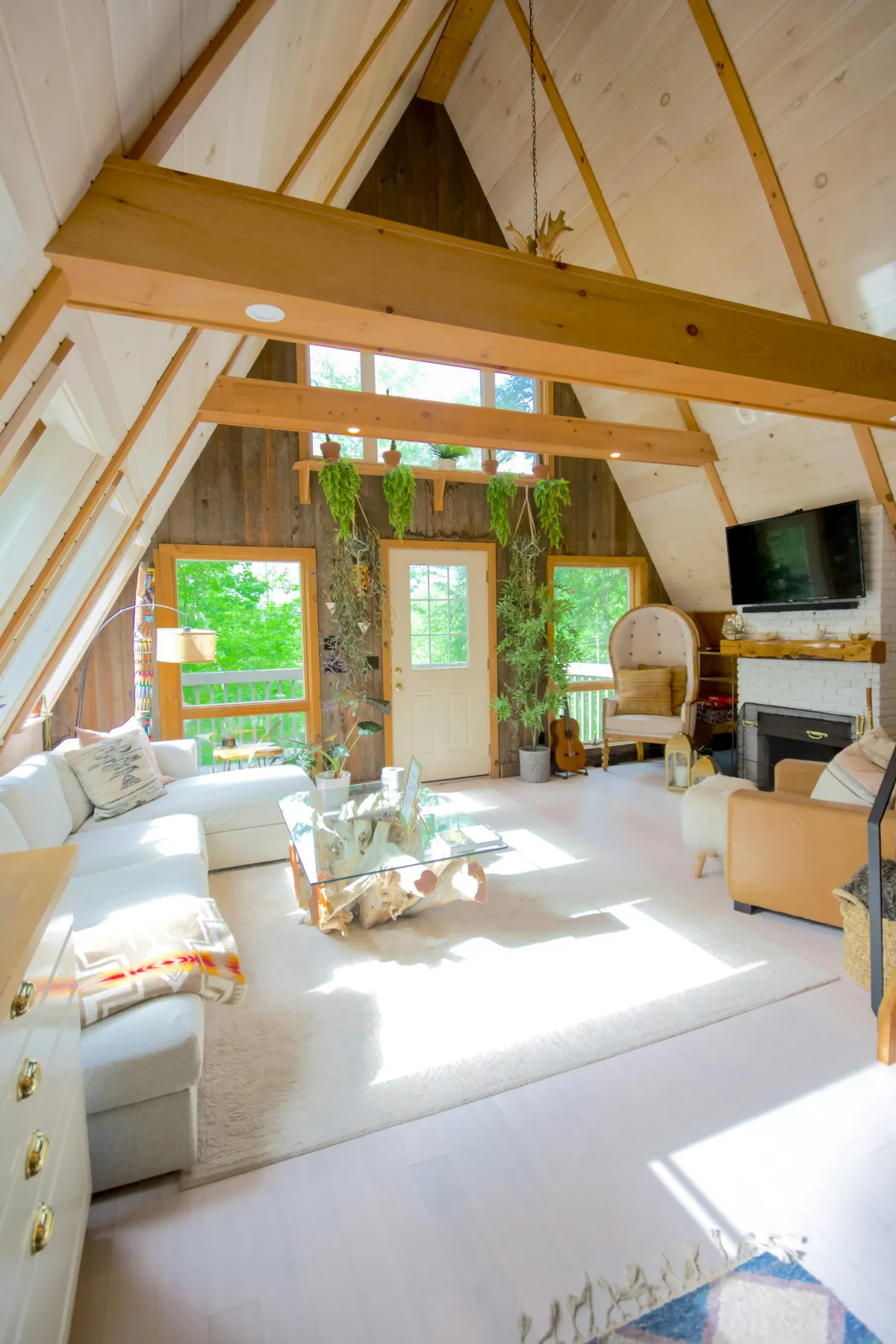
How to Build Sustainably Without Breaking the Bank
Building sustainably doesn’t have to drain your wallet. Many believe that eco-friendly construction is always expensive, but there are ways to keep costs down. This article will discuss practical strategies, such as evaluating budget-friendly sustainable materials and implementing energy-efficient design techniques. Readers will learn how to achieve sustainable development goals while minimizing consumption and reducing greenhouse gas emissions. By addressing common concerns about costs, this guide offers innovative solutions to build a greener home without breaking the bank.
Key Takeaways
Sustainable building practices focus on reducing waste and energy use for cost savings.
Local sourcing of materials can lower costs and promote eco-friendly construction.
Energy-efficient designs enhance comfort while minimizing reliance on heating and cooling systems.
Implementing project management strategies helps meet sustainability goals within budget.
Exploring government incentives can provide financial support for green building initiatives.
Evaluate Sustainable Materials That Fit Your Budget

Identifying local sourcing options can significantly reduce costs for sustainable building materials. Exploring reclaimed and recycled materials not only aids the environment but also contributes to creating an effective building envelope. High-quality, environmentally friendly materials often lead to long-term savings on energy costs, such as those related to air conditioning. This section will provide insights into these options and their benefits.
Identify Local Sourcing Options for Reduced Costs
Finding local sources for building materials can significantly cut costs while promoting sustainability. When property owners seek out nearby suppliers, they can lower shipping expenses and reduce energy consumption related to transportation. Additionally, utilizing materials that meet ASHRAE standards can improve energy efficiency, enhancing indoor air quality with effective air filtration systems. This approach not only helps keep budgets in check but also fosters an eco-friendly environment that benefits everyone.
Explore Reclaimed and Recycled Materials
Using reclaimed and recycled materials in building projects not only supports green building practices but also helps save money. These materials often come from old structures or products, making them a sustainable choice that reduces waste. Incorporating such resources can enhance the architecture of a home while also contributing to renewable energy initiatives by minimizing the carbon footprint associated with new manufacturing processes.
Reclaimed materials come from previous constructions, reducing waste.
Recycled products lower costs and support green building ideals.
Using sustainable materials boosts energy efficiency in homes.
Assess the Long-Term Savings of High-Quality Materials
Investing in high-quality materials for sustainable building projects can lead to significant long-term savings. For instance, homeowners in North America who focus on materials that support energy efficiency often see a favorable return on investment, particularly when retrofitting existing structures. These materials promote better insulation and contribute to achieving net zero emissions, aligning with the growing demand for eco-conscious living in today's changing climate.
Implement Energy-Efficient Design Techniques

Optimizing building orientation and maximizing natural light can significantly enhance energy efficiency in sustainable construction. Incorporating energy-efficient windows and proper insulation further strengthens the building envelope, reducing waste and minimizing heating and cooling costs. Additionally, utilizing passive solar heating and cooling techniques helps harness the sun's energy, providing a valuable resource in the fight against climate change.
Optimize Building Orientation and Natural Light
Optimizing building orientation and maximizing natural light are key strategies for promoting sustainability in construction. By positioning a home to take advantage of sunlight, builders can reduce carbon footprints significantly, minimizing reliance on artificial lighting and heating systems. This approach not only enhances the comfort of living spaces but also contributes to sustainable design and lowers the costs associated with manufacturing energy-efficient materials.
Incorporate Energy-Efficient Windows and Insulation
Energy-efficient windows and proper insulation are vital for maintaining high efficiency in any sustainable building project. By selecting windows that reduce heat loss and improve indoor air quality, homeowners can create a comfortable space while keeping energy costs low. Additionally, using concrete for roofs and well-insulated walls significantly enhances a structure's overall performance, making it easier to manage occupancy levels and climate control without overspending.
Utilize Passive Solar Heating and Cooling
Utilizing passive solar heating and cooling can significantly lower energy costs in sustainable building. This technique involves designing homes to take full advantage of sunlight, allowing natural warmth to enter during colder months while blocking it during warmer months. By incorporating elements like overhangs and strategically placed windows, homeowners can reduce their reliance on heating and air conditioning systems, promoting comfort without excessive spending.
Design homes to maximize sunlight in winter and minimize it in summer.
Incorporate overhangs and window placement for better temperature control.
Reduce reliance on heating and cooling systems to save on energy costs.
Explore Cost-Effective Renewable Energy Options

Homeowners can consider solar energy solutions to reduce energy costs and promote sustainability. For larger projects, assessing wind energy applications offers potential savings and efficient power generation. Additionally, investigating community renewable energy programs can provide valuable resources and support for sustainably building a home. These options highlight practical ways to pursue renewable energy without high expenses.
Consider Solar Energy Solutions for Homeowners
Solar energy solutions offer homeowners a viable way to cut energy costs while building sustainably. By installing solar panels, residents can generate their own electricity, reducing reliance on traditional energy sources and lowering monthly bills. Many programs provide incentives or rebates, making solar energy more affordable and accessible for everyone looking to build or renovate a home sustainably.
Assess Wind Energy Applications for Larger Projects
Wind energy applications can be a smart choice for larger building projects looking to cut costs while promoting sustainability. By installing wind turbines, homeowners can generate renewable energy that reduces reliance on conventional power sources. This not only leads to lower utility bills but also supports eco-friendly practices, making it an appealing option for those aiming to build sustainably without overspending.
Investigate Community Renewable Energy Programs
Investigating community renewable energy programs can lead to valuable support for homeowners looking to build sustainably without high expenses. Many communities offer group purchasing options for solar energy systems, which can lower installation costs by pooling resources together. Engaging with local initiatives not only promotes savings but also fosters a sense of community and commitment to environmental stewardship.
Utilize Innovative Construction Methods to Save Costs

Embracing modern construction methods can greatly assist in building sustainably while keeping costs down. Techniques such as modular and prefabricated buildings streamline the construction process, leading to savings. Investigating 3D printing technology offers innovative solutions for creating structures efficiently. Collaborating with builders who focus on sustainable practices ensures that projects align with eco-friendly goals while managing budgets effectively.
Embrace Modular and Prefabricated Building Techniques
Modular and prefabricated building techniques present an effective way to save costs while building sustainably. These methods involve constructing sections of a home in a factory setting before transporting them to the site for assembly. By streamlining the construction process, homeowners can minimize waste, decrease labor costs, and reduce overall project time, making it easier to budget and achieve sustainability goals.
Modular building reduces construction time significantly.
Prefabricated materials contribute to less waste and efficient resource use.
Both methods offer customization options to meet specific needs.
Investigate 3D Printing Technologies in Construction
3D printing technologies in construction offer exciting opportunities for sustainable building while reducing costs. These innovative methods allow for efficient use of materials, minimizing waste during the construction process. Builders can create structures tailored to specific needs, which can lead to quicker assembly times and lower labor expenses, making sustainable buildings more accessible to homeowners.
3D printing reduces material waste during construction.
Customized designs help meet specific homeowner needs.
Faster assembly times lead to lower labor costs.
Collaborate With Builders Who Specialize in Sustainable Practices
Choosing to collaborate with builders who specialize in sustainable practices can help homeowners achieve their eco-friendly goals while staying within budget. These builders are knowledgeable about innovative construction methods and materials that reduce waste and energy consumption. They can provide valuable insights and practical solutions tailored to specific needs, ensuring a smooth building process that aligns with both sustainability and financial constraints.
Work with experts who understand sustainable practices.
Access innovative construction techniques to cut costs.
Receive personalized advice to match needs and budget.
Conclusion
Building sustainably is not just an environmental choice; it can be a financially smart move. By understanding key principles, utilizing local and reclaimed materials, and implementing energy-efficient techniques, homeowners can reduce costs significantly. Exploring innovative construction methods and seeking out available incentives further enhances budget management while promoting eco-friendly practices. Ultimately, making informed decisions in sustainable building leads to long-term savings and a positive impact on the planet.


